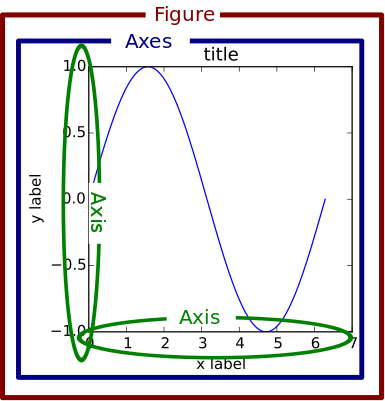from IPython.core.display import HTML
def _set_css_style(css_file_path):
"""
Read the custom CSS file and load it into Jupyter.
Pass the file path to the CSS file.
"""
styles = open(css_file_path, "r").read()
s = '<style>%s</style>' % styles
return HTML(s)
_set_css_style('rise.css')
Iteration and data visualization¶
- Logical operators and conditional statements
- Group membership
- Loops and iteration
- Slicing
- Data visualization with
matplotlibandseaborn
Conditionals and control flow¶
if statements
- An
ifstatement conditionally executes a block of code - The condition is some Boolean value
- A block of code is delineated by consistent indentation.
- Blank lines and comments will not end a block
- Whitespace is significant - do not mix tabs and spaces
- In an
if..elif..elsestatement, only one block of code will be executed
if False:
print(1)
elif True:
print(2)
else:
print(3)
What is val?¶
val = 0
if val >= 0:
val += 1
elif val < 1:
val += 2
elif True:
val += 3
else:
val += 5
val += 7
val
pass¶
pass does nothing
if True:
pass
else:
print("I will never print")
Logical operators¶
and,or, andnotnothas higher precedence thanandwhich has higher precedence thanor- all three have lower precedence than comparison operators
- but use parentheses to avoid confusion
Compound example: not (x and y) = (not x) or (not y)
A more complex example¶
x = 3; y = 4; z = 5
(x != 3 or not y < 0) and (z < 10 or not y == 0)
print(x != 3)
print(not y < 0)
print(z < 10)
print(not y == 0)
Membership testing¶
in and not in can be used to see if an object is in a collection
l = [1, 2, 3]
1 in l
345 in l
"1" not in l
"good" in "goodness"
Membership depends on the container¶
'cat' in 'catalog'
'cat' in ['catalog', 'catastrophe']
Loops¶
i = 0
while i < 3: # as long as this condition is true...
print(i) # ...execute this block of code
i += 1
letters = ['a','b','c','d','e','f','g']
for i in letters: # for every item in this collection...
print(i) # ...execute this block of code with i set to the object
range¶
The preferred method of looping is to use a for loop. There are a number of builtin functions to help create collections to iterate over.
list(range(3))
list(range(1,10))
list(range(1,10,3))
What is val?¶
val = 0
for i in range(10):
val += i
val
Iterable¶
for will loop over any iterable object
In addition to collections, this includes any object that can provide items one at a time (e.g., files)
f = open("../files/brca1.fasta")
count = 0
for line in f.readlines():
count += len(line)
count
f = open("../files/brca1.fasta")
count = 0
for line in f: # can iterate through file object directly!
count += len(line)
count
break and continue¶
break will exit out of the entire loop while continue will skip to the next iteration
i = 0
while True:
i += 1
if i < 6:
continue
print(i)
if i > 4:
break
What is the value of x?¶
x = 0
while x < 100:
if x < 50:
pass
elif x == 5:
break
x += 1
x
Slicing¶
What if you don't want to iterate over the full list?
s = "Hello"
s[0:2]
s[2:] # empty indices indicate remainder of string/list
s[:-2] # negative indices count from the back
s2 = "Hello, world"
s2[:-2]
Slicing a list¶
l = ["cat", "dog", "fish", "mouse"]
l[2:3]
matplotlib¶
Makes easy things easy and hard things possible
plt has hundreds of functions for creating and manipulating plots
plt.plot creates line/point graphs
You can specify an arbitrary number of x, y, format arguments
import matplotlib.pyplot as plt
# next is a python notebook command to embed plot output in the notebook
# this may or may not be necessary depending on versions
%matplotlib inline
plt.plot([0,1,2,3], [0,1,2,3], '-b', [0,1,2,3], [0,1,4,9], '--r')
plt.ylabel('Y')
plt.xlabel('X')
plt.show() # not actually necessary in notebook
matplotlib can overlay multiple plots on the same figure¶
plt.plot([1,2,4,9,16], label='one') # if only one data set is provide, assume uniform x
plt.plot([0.5,1,2,4.5,8], '^-.', label='two') # keep adding to current graph until show is called
plt.legend() # uses labels
plt.show()
plt.show() # this doesn't show anything since we haven't created another plot
plt.close() # another way to finish with a plot
If you use the %matplotlib command in ipython, the plot will be updated with every command (can skip show)
Many options for formatting plots (marker type, color, size, ...)¶
Can also specify colors with hexadecimal or color-generating functions
plt.plot([1,2,4,6,7,4,2,2], 'orange', linewidth=6)
plt.show()
Plotting expression data¶
f = open('../files/Spellman.csv')
header = f.readline().rstrip().split(',') # rstrip removes newline
data = []
for line in f:
data.append(line.rstrip().split(','))
len(data)
for row in data[:10]: # first 10 only
values = list(map(float, row[1:]))
times = list(map(int, header[1:]))
plt.plot(times,values,label=row[0])
plt.legend(loc='upper center', ncol=5, prop={'size':7})
plt.xlabel("Time");
Bar charts¶
plt.bar([1.1,2.1,3.1], [30,40,50], 0.5, yerr=[2,10,12], ecolor="black", alpha=0.5, label="One")
plt.bar([1.4,2.4,3.4], [60,50,20], 0.5, color='r', yerr=[10,4,1], ecolor="black", alpha=0.5, label="Two")
plt.xticks([1.4,2.4,3.4], ['A','B','C'])
plt.ylim([0,100])
plt.legend();
Histograms¶
import random
rdata = []
for i in range(1000):
rdata.append(random.normalvariate(0,1))
plt.hist(rdata,10);
Combining chart types¶
Just accumulate plots
plt.hist(rdata,10)
plt.plot([-3,-1,0,1,2,3], [20,30,50,60,80,90], '-r', linewidth=3)
plt.show()
Multiple plots on a figure¶
fig, axes = plt.subplots(2,1)
plt.sca(axes[0]) #set current axis to first
plt.plot(header[1:],data[0][1:])
plt.ylabel(data[0][0])
plt.sca(axes[1])
plt.plot(header[1:],data[1][1:],'g')
plt.ylabel(data[1][0])
plt.show()
See also GridSpec
Multiple plots on a figure¶
numgenes = 3
fig, axes = plt.subplots(numgenes,1,sharex=True,sharey=True)
colors = ['b','g','purple']
for i in range(numgenes):
#most plot methods have equivalents on axes objects
axes[i].plot(header[1:],data[i][1:],color=colors[i])
axes[i].set_ylabel(data[i][0])
Saving figures¶
Instead of plt.show use plt.savefig
bbox_inches='tight' tells matplotlib to try harder to fit everything without extra white space
plt.axes(aspect=1)
plt.pie([8,2,1],labels=["A","B","C"])
plt.savefig("pie.png", bbox_inches='tight')
ls *png
Other formats: pdf, svg, eps...
Activity¶
https://MSCBIO2025-2025.github.io/files/Spellman.csv
- plot expression over time for a gene
- plot the histogram of initial expression levels
- plot the histogram of final expression levels
- plot the above histograms on the same plot with transparent fill
- plot the above with identical bin sizes for both histograms
- plot the above histograms on different subplots, vertically stacked
